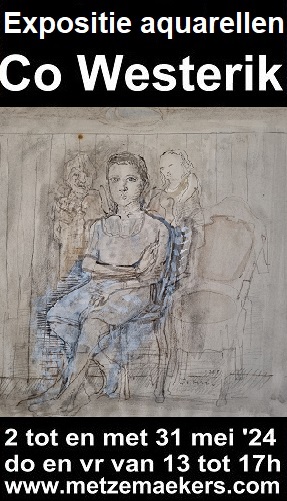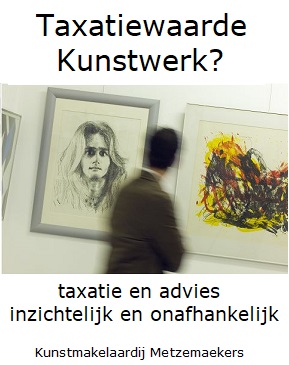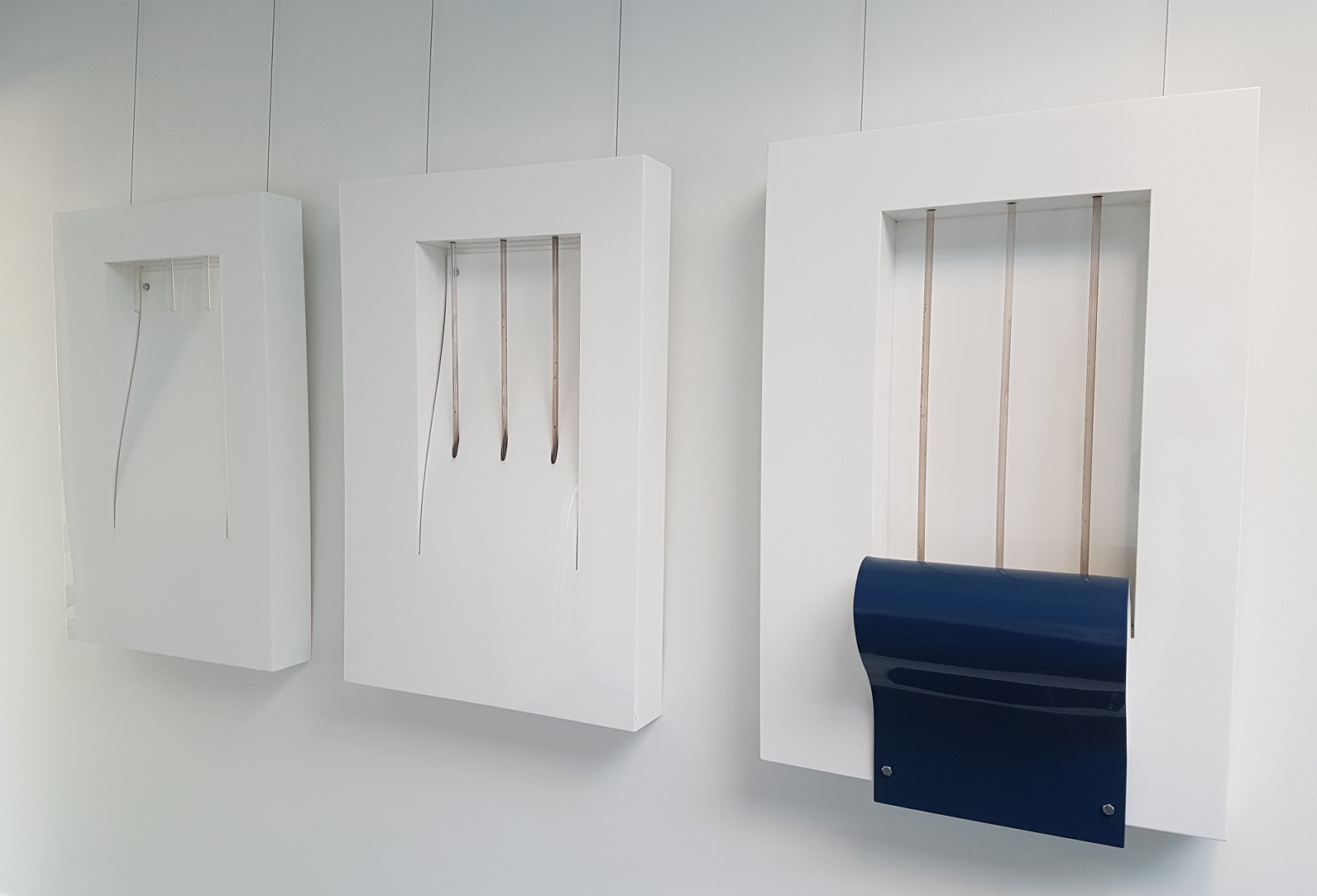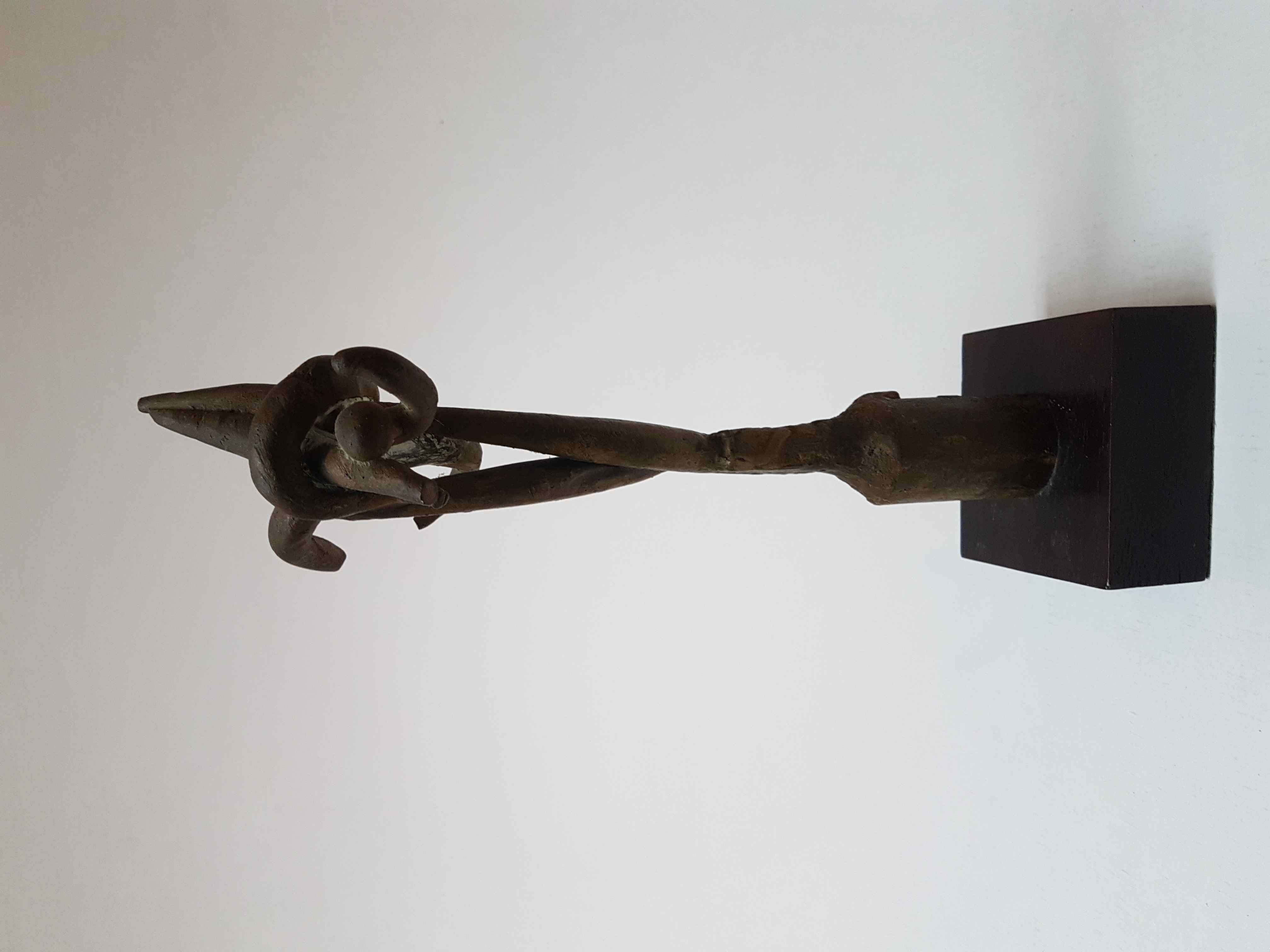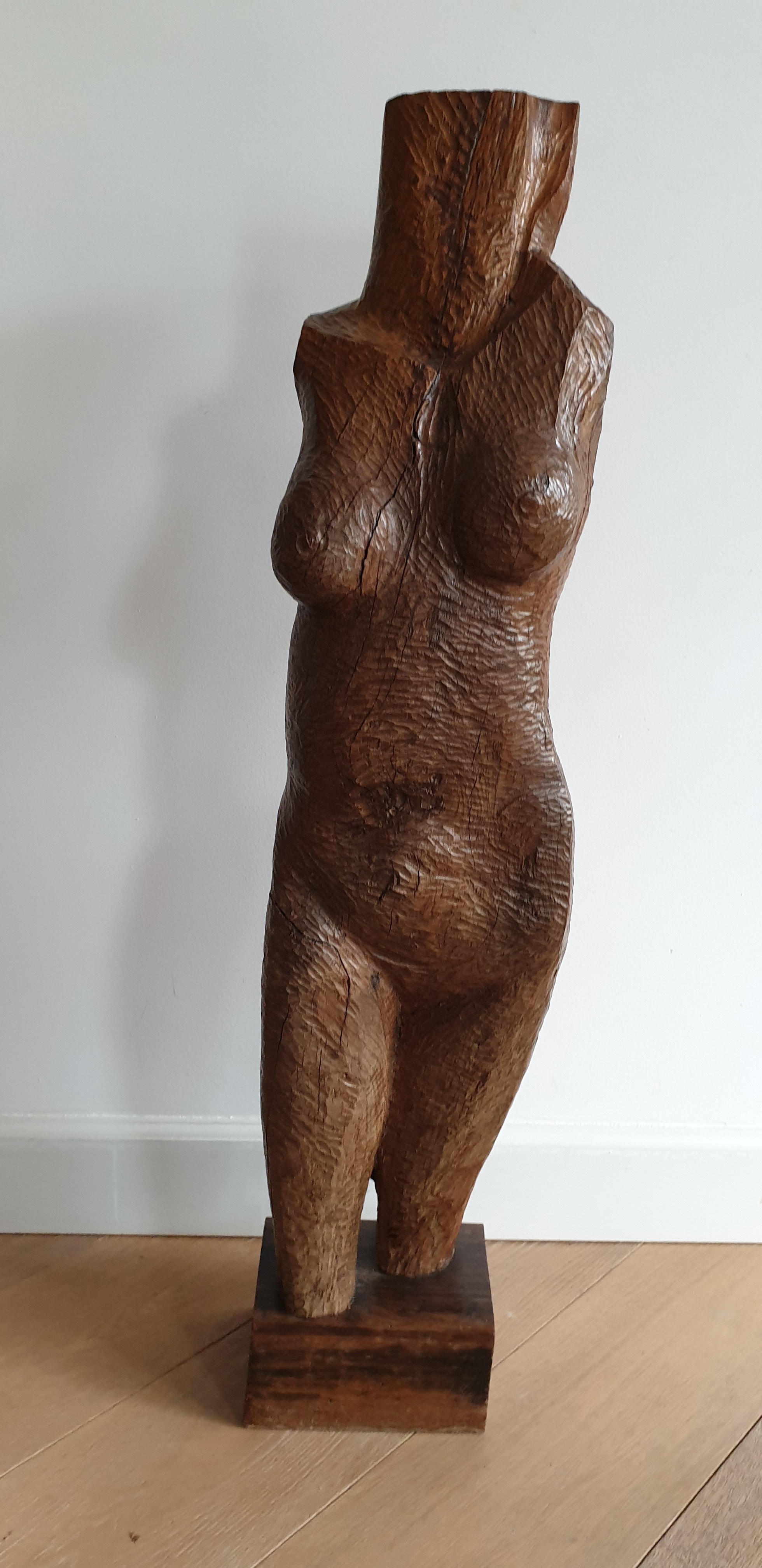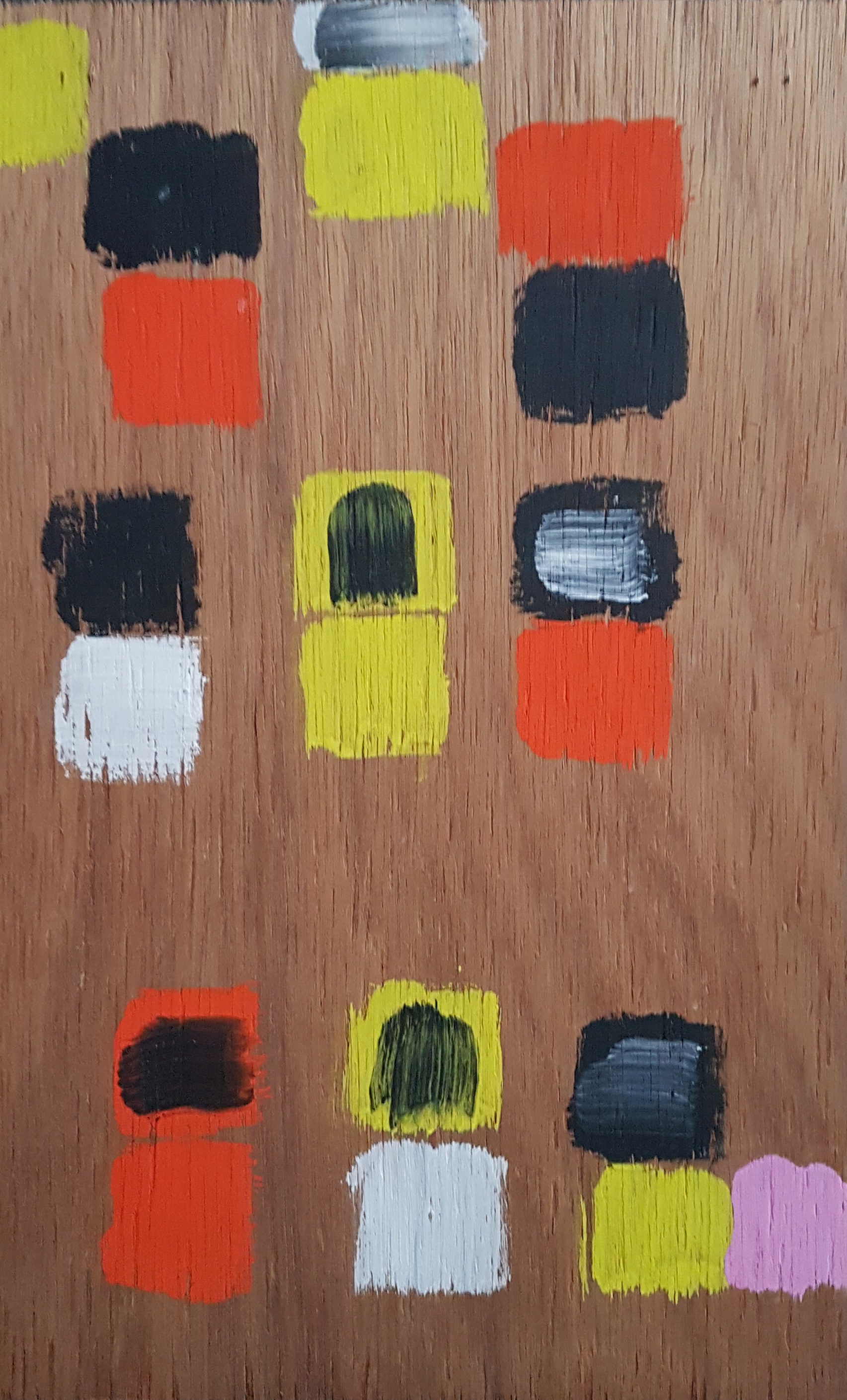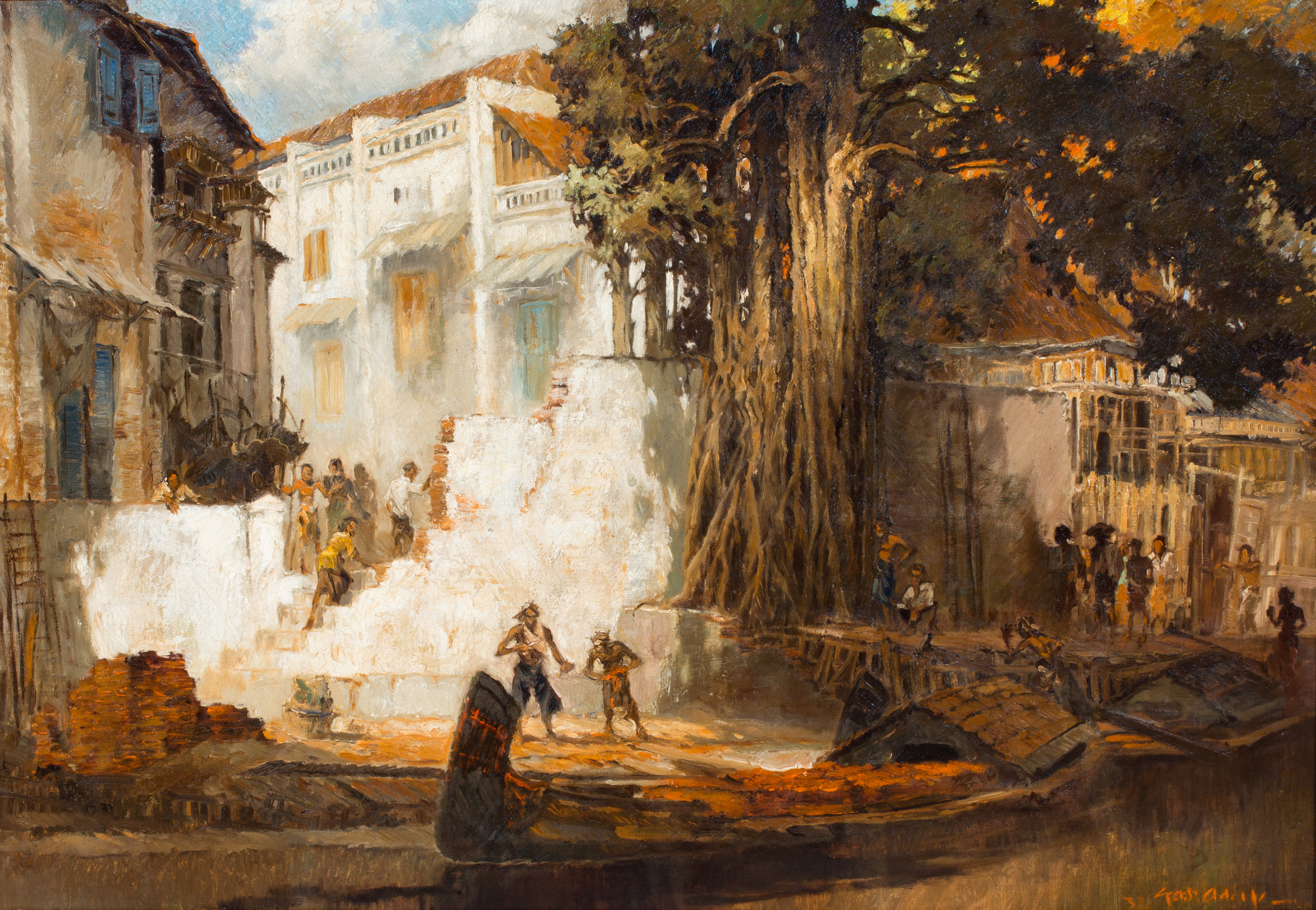
Beschrijving
Signed lower right and dated '32. Inscription on the reverse: 'Nr. 147 Madoereesche moord' en dated '32. And on the reverse studio label with address of Adolfs: Progostraat 3a, Soerabaia.
Literature: E. Borntraeger-Stoll en G. Orsini, ‘Gerard Pieter Adolfs (1898-1968), the painter of Java and Bali’, Wijk & Aalburg, 2008, with black and white picture on p. 378: 'Madoereesche moord' 1929, oil on canvas, circa 90x135 cm. And ill. on p. 23: This is an an illustration of Adolf's private house with the furniture he designed for I.E.V. clubhouse (Indo-European Association) in Surabaya in 1932. On the wall we see the painting 'The Madurese Murder'.
At the time of the publication of the book in 2008, the whereabouts of the painting was unknown. This explains the incorrect date of 1929 in the book.
Gerard Pieter Adolfs (1898–1968) – ‘The Madurese Murder’
The 1929 painting ‘The Madurese Murder’ is one of the highlights in the oeuvre of Gerard Pieter Adolfs (1898–1968). One anonymous art critic writing for the Soerabaijasch Handelsblad (‘Surabayan Newspaper’), who labelled the work as such in 1933, described the ominous, mystical atmosphere and the mounting tension evident in every brushstroke.
Small though the main players in the painting may be, the dramatic nature of the event is heightened by the majestic weeping fig, the boat in the foreground, the tense spectators, and not least the architecture—partly old houses and crumbling walls, partly modern Art Deco—the layered composition, the use of chiaroscuro. Adolfs has put everything into building towards this stunning climax. The anonymous critic calls the result ‘Rembrandtesque’.
It is evident that the European study trip Adolfs undertook in 1928 resulted in a dramatic shift in his painting style. In Italy, he studied the works of Caravaggio and at the Dutch Rijksmuseum those of Rembrandt, from which he learned how to fully utilise the chiaroscuro effect.
As a child, the Java born and bred Adolfs had a knack for drawing, and his education in architecture helped him capture his environment, but he did not receive a formal education in painting. In this sense, he was self-taught. He studied the work of the old masters and the rich colours of Java, and he began to mix his own paint. In an interview by Henri van Velthuijsen, in the February 1936 issue of the magazine ‘D’Oriënt’, Adolfs says he managed to find time between being an architect and a father to teach himself how to paint, and that he was pleasantly surprised by the results of his early ventures into painting. These works are remarkable in particular because of their evident spontaneity and their impressionistic atmosphere. Adolfs was eager to see the ‘reality all around him’, and to portray it in a way that allowed the viewer to see through his eyes. This allowed Adolfs to take his painting in a clear direction: he knew what he wanted to convey to his audience, including potential buyers. To pour his heart and soul into truly understanding reality—that was what Adolfs wanted as a painter. He compared himself to a musician who can only learn how to play his instrument optimally after much practice. No ‘l’art pour l’art’, but art and artist providing a service to his community.
Worth noting is an observation made by art critic Cornelis Veth in response to one of Adolfs’ exhibitions in the Royal Art Gallery Kleykamp in 1929. Veth saw a directness and spontaneity in the atmosphere of the scenes Adolfs captured in his paintings: in the intimate and vivid setting of an old district in Surabaya (as in ‘The Madurese Murder’), an epic landscape, or the elegant indolence of the indigenous population. Adolfs had a gift for enthralling his audience with passionate, unpretentious inspiration and well-chosen compositions. (‘De Telegraaf’, 2 June 1929.)
Encouraged—and supported financially—by the publisher of the Soerabaijasch Handelsblad, Henri Carel Zentgraaff, Adolfs undertook a trip to Europe in 1928. Via the Suez Canal, he travelled to several cities of great cultural and artistic interest. In Genoa, Rome, and Florence he saw the work of Italian Renaissance painters and met his contemporaries. In Paris, he befriended Foujita, with whom he met once again many years later, in 1936, during a trip to Japan. After Paris, Adolfs visited Amsterdam, where he saw the work of the Dutch masters in the Rijksmuseum, inspiring him in his preparations for his exhibition at the Royal Art Gallery Kleykamp in June of the following year (1929).
When Adolfs returned to Surabaya in 1928 to prepare his first exhibition after his trip to Europe, the public was apprehensive. This apprehension proved unfounded: in Malang, Surabaya, and Semarang his work was highly praised. ‘He stayed true to himself, thank heavens’ (‘De Indische Courant’, Surabaya, 4 April 1930).
After a few years of painting in a Rembrandtesque style, Adolfs changed course: his works in the period 1930–1935 are perhaps best characterised as graphic due to the use of sharp contours and repoussoir, a technique used to create depth by placing an object or figure in the foreground. In their book on the artist, Eveline Borntraeger-Stoll and Gianni Orsini describe the period of 1936–1940 as his impressionistic phase. The vibrating use of colour and lack of contours take centre stage, as opposed to his earlier, more monochromatic works. In 1940 Adolfs was forced to return to the Netherlands; WWII prevented him from returning to his beloved Indies. This period (1940–1947) is referred to as the Luminist period. Powerful, short brushstrokes allowed Adolfs to give his characters more personality than before, and intense colour combinations turned parts of his canvasses into something resembling a painter’s palette.
In Adolfs’ Neo-Impressionist years (1946–1967), his use of colour became more intense still as he further emphasised the contrast between colours and dark and light. His powerful strokes, made using a palette knife, underscored this effect. For important details such as faces, he kept using a traditional brush. In some portraits, Adolfs did use a palette knife, but this coarseness did not always do justice to his subjects. In his later years, this development led to experiments in abstract painting. As they never quite seemed to leave the experimental stage, these works are not generally considered highlights of his oeuvre.
Madoereesche moord / The Madurese Murder
Adolfs, Gerard Pieter
(Semarang, 1898
-
Den Bosch,
1 februari 1968)
Details
- Databanknummer:
- 79618
- Lotnummer:
- -
- Advertentietype
- Archief
- Instelling:
- Venduehuis Den Haag
- Veilingdatum:
- -
- Veilingnummer:
- -
- Stad
- -
- Limietprijs
- -
- Aankoopprijs
- -
- Verkoopprijs
- -
- Hamerprijs
- -
- Status
- Verkocht
Technische details
- Kunstvorm:
- Schilder- en Tekenkunst
- Technieken:
- Olieverf
- Dragers:
- Doek
- Lengte:
- 78 cm
- Breedte:
- 113 cm
- Hoogte:
- -
- Oplage:
- -
Beschrijving
Signed lower right and dated '32. Inscription on the reverse: 'Nr. 147 Madoereesche moord' en dated '32. And on the reverse studio label with address of Adolfs: Progostraat 3a, Soerabaia.
Literature: E. Borntraeger-Stoll en G. Orsini, ‘Gerard Pieter Adolfs (1898-1968), the painter of Java and Bali’, Wijk & Aalburg, 2008, with black and white picture on p. 378: 'Madoereesche moord' 1929, oil on canvas, circa 90x135 cm. And ill. on p. 23: This is an an illustration of Adolf's private house with the furniture he designed for I.E.V. clubhouse (Indo-European Association) in Surabaya in 1932. On the wall we see the painting 'The Madurese Murder'.
At the time of the publication of the book in 2008, the whereabouts of the painting was unknown. This explains the incorrect date of 1929 in the book.
Gerard Pieter Adolfs (1898–1968) – ‘The Madurese Murder’
The 1929 painting ‘The Madurese Murder’ is one of the highlights in the oeuvre of Gerard Pieter Adolfs (1898–1968). One anonymous art critic writing for the Soerabaijasch Handelsblad (‘Surabayan Newspaper’), who labelled the work as such in 1933, described the ominous, mystical atmosphere and the mounting tension evident in every brushstroke.
Small though the main players in the painting may be, the dramatic nature of the event is heightened by the majestic weeping fig, the boat in the foreground, the tense spectators, and not least the architecture—partly old houses and crumbling walls, partly modern Art Deco—the layered composition, the use of chiaroscuro. Adolfs has put everything into building towards this stunning climax. The anonymous critic calls the result ‘Rembrandtesque’.
It is evident that the European study trip Adolfs undertook in 1928 resulted in a dramatic shift in his painting style. In Italy, he studied the works of Caravaggio and at the Dutch Rijksmuseum those of Rembrandt, from which he learned how to fully utilise the chiaroscuro effect.
As a child, the Java born and bred Adolfs had a knack for drawing, and his education in architecture helped him capture his environment, but he did not receive a formal education in painting. In this sense, he was self-taught. He studied the work of the old masters and the rich colours of Java, and he began to mix his own paint. In an interview by Henri van Velthuijsen, in the February 1936 issue of the magazine ‘D’Oriënt’, Adolfs says he managed to find time between being an architect and a father to teach himself how to paint, and that he was pleasantly surprised by the results of his early ventures into painting. These works are remarkable in particular because of their evident spontaneity and their impressionistic atmosphere. Adolfs was eager to see the ‘reality all around him’, and to portray it in a way that allowed the viewer to see through his eyes. This allowed Adolfs to take his painting in a clear direction: he knew what he wanted to convey to his audience, including potential buyers. To pour his heart and soul into truly understanding reality—that was what Adolfs wanted as a painter. He compared himself to a musician who can only learn how to play his instrument optimally after much practice. No ‘l’art pour l’art’, but art and artist providing a service to his community.
Worth noting is an observation made by art critic Cornelis Veth in response to one of Adolfs’ exhibitions in the Royal Art Gallery Kleykamp in 1929. Veth saw a directness and spontaneity in the atmosphere of the scenes Adolfs captured in his paintings: in the intimate and vivid setting of an old district in Surabaya (as in ‘The Madurese Murder’), an epic landscape, or the elegant indolence of the indigenous population. Adolfs had a gift for enthralling his audience with passionate, unpretentious inspiration and well-chosen compositions. (‘De Telegraaf’, 2 June 1929.)
Encouraged—and supported financially—by the publisher of the Soerabaijasch Handelsblad, Henri Carel Zentgraaff, Adolfs undertook a trip to Europe in 1928. Via the Suez Canal, he travelled to several cities of great cultural and artistic interest. In Genoa, Rome, and Florence he saw the work of Italian Renaissance painters and met his contemporaries. In Paris, he befriended Foujita, with whom he met once again many years later, in 1936, during a trip to Japan. After Paris, Adolfs visited Amsterdam, where he saw the work of the Dutch masters in the Rijksmuseum, inspiring him in his preparations for his exhibition at the Royal Art Gallery Kleykamp in June of the following year (1929).
When Adolfs returned to Surabaya in 1928 to prepare his first exhibition after his trip to Europe, the public was apprehensive. This apprehension proved unfounded: in Malang, Surabaya, and Semarang his work was highly praised. ‘He stayed true to himself, thank heavens’ (‘De Indische Courant’, Surabaya, 4 April 1930).
After a few years of painting in a Rembrandtesque style, Adolfs changed course: his works in the period 1930–1935 are perhaps best characterised as graphic due to the use of sharp contours and repoussoir, a technique used to create depth by placing an object or figure in the foreground. In their book on the artist, Eveline Borntraeger-Stoll and Gianni Orsini describe the period of 1936–1940 as his impressionistic phase. The vibrating use of colour and lack of contours take centre stage, as opposed to his earlier, more monochromatic works. In 1940 Adolfs was forced to return to the Netherlands; WWII prevented him from returning to his beloved Indies. This period (1940–1947) is referred to as the Luminist period. Powerful, short brushstrokes allowed Adolfs to give his characters more personality than before, and intense colour combinations turned parts of his canvasses into something resembling a painter’s palette.
In Adolfs’ Neo-Impressionist years (1946–1967), his use of colour became more intense still as he further emphasised the contrast between colours and dark and light. His powerful strokes, made using a palette knife, underscored this effect. For important details such as faces, he kept using a traditional brush. In some portraits, Adolfs did use a palette knife, but this coarseness did not always do justice to his subjects. In his later years, this development led to experiments in abstract painting. As they never quite seemed to leave the experimental stage, these works are not generally considered highlights of his oeuvre.
Aangeboden kunst
Een selectie uit ons kunstaanbod
